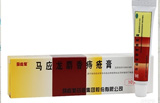New lighthouses make sea safer
By Zhang Yunbi in Sansha, Hainan (China Daily) Updated: 2016-05-23 08:29
Range of recently constructed navigation aids in South China Sea helps all vessels
China is perfecting maritime navigation aids for civilian vessels in the South China Sea, as the country has built two lighthouses and four beacons on the Xisha Islands, sources told China Daily.
In addition to the visible aids - lighthouses, beacons and buoys - China is also offering radio aids to support navigation, such as the Automatic Identification System, a tool used around the world for marine contacts.
As of May, China had four base stations for AIS communications on the Xisha Islands, providing complete coverage of the area, insiders familiar with China's navigation safety services and relevant buildups said on the condition of anonymity.
Now, with a click on the client app on a cellphone, one can see the locations of vessels sailing in the Xisha area, including basic identifying information and destination.
"The AIS service helps navigation in extreme weather conditions, including typhoons, and is critically important for avoiding collisions. Unlike cars, ships cannot make a sharp U-turn," one of several sources said.
China's lighthouses have also been flashing in some parts of the Nansha Islands, including Huayang Reef, Chigua Reef and Zhubi Reef.
The sources said the lighthouses have multiple functions, hosting base stations for services such as AIS, VHF and civilian cellphone networks, "making them a comprehensive platform".
Before the navigation aids came along, some island dwellers put red caution lights on their rooftops to help ships find their way late at night, when nothing else could be seen in the darkness.
"The lighthouses sometimes serve as temporary shelter to sailors from toppled ships. We found some quilts at the lighthouses - people apparently slept there. ... Also we saw some toppled ships that were stranded there," another source said.
Skeptics have questioned the amount and quality of China's maritime navigational aids for ships in the South China Sea. But both the visible and radio aids conform to international norms and are available to civilian ships, and China's services help protect the maritime ecology, the sources said.
"If a ship carrying hundreds of thousands of tons of crude oil sinks here, it will be a disaster and the pollution will impact both China and other areas," one of the sources said.
China, a member of International Association of Lighthouse Authorities and the International Maritime Organization, subscribes to international standards, follows the systems stipulated by the associations, and enjoys a rising reputation within them, according to a source.
"China, a responsible major country, makes great efforts to ensure navigational safety - not just our own but also the world's. We do not oblige other countries to follow us, but we are indeed improving navigational safety and environmental protection."
What's been built
China has built a number of lighthouses in both the Xisha and Nansha islands to help boost navigational safety in the South China Sea, a critical maritime and trade corridor linking the Pacific and Indian oceans.
On Oct 9, a completion ceremony was held for the construction of the Huayang and Chigua lighthouses on Huayang Reef in the Nansha Islands, marking the beginning of China's civil aids to navigation in the area. On Oct 21, Sansha city in Hainan province announced that two Xisha lighthouses - on Jinqing Island and Lingyang Reef - were complete, China News Service reported. In April, a lighthouse on Zhubi Reef in the Nansha Islands area also was completed.
zhangyunbi@chinadaily.com.cn
- New lighthouses make sea safer
- Tourism, a ship of world peace and development
- Call to give girls HPV vaccine by top US scientist
- Women flock to Hong Kong for HPV inoculations
- Rescue vessel eyed for the Nansha Islands
- Graduates reluctant to start a business
- NGOs take chemical factories to court
- Heavy rain wreaks havoc in China
- Burgeoning purchasing power of Chinese shapes global economy
- China to play 'very important role' at G20 Summit: Jim O'Neill








